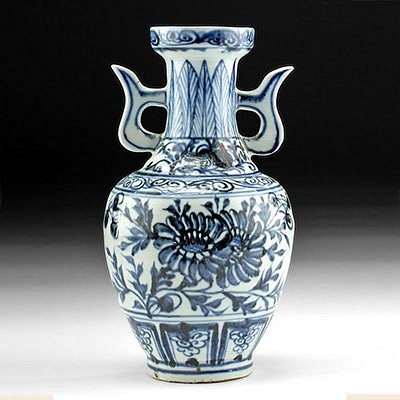Roman Marble Sarcophagus Relief Panel - Nude Male
Lot 16b
About Seller
Artemis Fine Arts
686 S Taylor Ave, Ste 106
Louisville, CO 80027
United States
Selling antiquities, ancient and ethnographic art online since 1993, Artemis Gallery specializes in Classical Antiquities (Egyptian, Greek, Roman, Near Eastern), Asian, Pre-Columbian, African / Tribal / Oceanographic art. Our extensive inventory includes pottery, stone, metal, wood, glass and textil...Read more
Categories
Estimate:
$1,600 - $2,000
Absentee vs Live bid
Two ways to bid:
- Leave a max absentee bid and the platform will bid on your behalf up to your maximum bid during the live auction.
- Bid live during the auction and your bids will be submitted real-time to the auctioneer.
Bid Increments
| Price | Bid Increment |
|---|---|
| $0 | $25 |
| $300 | $50 |
| $1,000 | $100 |
| $2,000 | $250 |
| $5,000 | $500 |
| $10,000 | $1,000 |
| $20,000 | $2,500 |
| $50,000 | $5,000 |
| $100,000 | $10,000 |
| $200,000 | $20,000 |
About Auction
By Artemis Fine Arts
Nov 19, 2020
Set Reminder
2020-11-19 10:00:00
2020-11-19 10:00:00
America/New_York
Bidsquare
Bidsquare : Ancient Treasures & Holiday Jewelry
https://www.bidsquare.com/auctions/artemis-gallery/ancient-treasures-holiday-jewelry-6035
Travel around the world and back in time and be amazed at the treasures you will find! Antiquities from Egypt, Greece, Italy and the Near East, Asian, Pre-Columbian, African/Tribal/Oceanic, Native American, Spanish Colonial, Fine Art, much more. Shop early for the holidays! Artemis Fine Arts info@artemisfinearts.com
Travel around the world and back in time and be amazed at the treasures you will find! Antiquities from Egypt, Greece, Italy and the Near East, Asian, Pre-Columbian, African/Tribal/Oceanic, Native American, Spanish Colonial, Fine Art, much more. Shop early for the holidays! Artemis Fine Arts info@artemisfinearts.com
- Lot Description
Roman, Imperial Period, ca. 2nd to 3rd century CE. A skillfully carved marble relief panel fragment from a Roman sarcophagus depicting a nude male, perhaps Apollo or another Olympian god. His head is turned toward his right, looking over his shoulder, and presents a handsome visage with skillfully delineated delicate features crowned by a wavy coiffure with long locks adorned by a wreath or diadem atop his head and long tendrils cascading past his shoulders. His muscular physique is beautifully rendered with well-defined pectorals and abdominals around his navel, and delineated genitalia between his legs. Size: 3.625" W x 6.2" H (9.2 cm x 15.7 cm)
This Roman sculpture clearly aspired to an earlier Greek tradition that was not interested in veristic representations of age or individualized features. Instead, the emphasis was on an ideal image of perfect anatomy. This said, while not necessarily aiming for realism, the sculptor did strive to convey naturalism. Note the harmonious proportions of head to body, arm to torso, as well as the meticulous detailing of the hair, eyes, nose, etc. These are all believable to our eyes - although free of any imperfections and hence idealized. While realism depicts the world as it actually is, naturalism in the Classical sense presented a possible world - free of blemishes and full of beauty.
Prior to the 2nd century, Romans cremated their dead; around that time, inspired by the Greek and Etruscan practice of using sarcophagi, they began to place the deceased in sarcophagi. This trend spread rapidly throughout the Roman Empire and continued into the Byzantine period. In the western part of the Empire, sarcophagi were placed inside a mausoleum against a wall or in a niche, so the only decorated panels were on the front and the short sides. This section of a panel probably came from the grave of an elite citizen.
Provenance: ex-Estate of Eldert Bontekoe, Pegasi Numismatics, Ann Arbor, Michigan USA acquired before 2000
All items legal to buy/sell under U.S. Statute covering cultural patrimony Code 2600, CHAPTER 14, and are guaranteed to be as described or your money back.
A Certificate of Authenticity will accompany all winning bids.
We ship worldwide and handle all shipping in-house for your convenience.
#160130A fragment of a sarcophagus panel with losses to peripheries as shown. Normal surface wear with abrasions to high-pointed areas and some softening of features. Surface is also graced with deposits.Condition
- Shipping Info
-
All shipping is handled in-house for your convenience. Your invoice from Artemis Gallery will include shipping calculation instructions. If in doubt, please inquire BEFORE bidding for estimated shipping costs for individual items.
-
- Buyer's Premium



 EUR
EUR CAD
CAD AUD
AUD GBP
GBP MXN
MXN HKD
HKD CNY
CNY MYR
MYR SEK
SEK SGD
SGD CHF
CHF THB
THB















